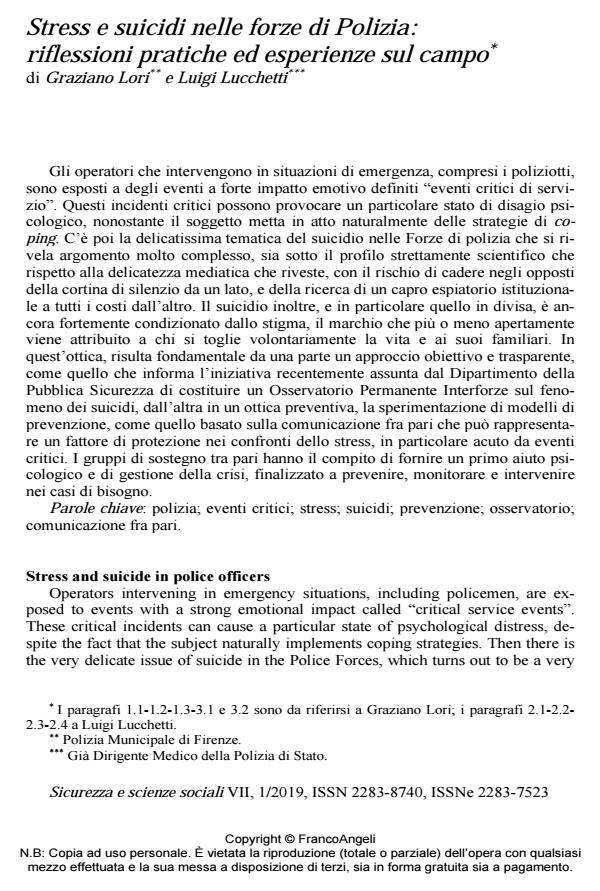Stress and suicide in police officers
Journal title SICUREZZA E SCIENZE SOCIALI
Author/s Graziano Lori , Luigi Lucchetti
Publishing Year 2019 Issue 2019/1
Language Italian Pages 17 P. 207-223 File size 216 KB
DOI 10.3280/SISS2019-001017
DOI is like a bar code for intellectual property: to have more infomation
click here
Below, you can see the article first page
If you want to buy this article in PDF format, you can do it, following the instructions to buy download credits

FrancoAngeli is member of Publishers International Linking Association, Inc (PILA), a not-for-profit association which run the CrossRef service enabling links to and from online scholarly content.
Operators intervening in emergency situations, including policemen, are exposed to events with a strong emotional impact called "critical service events". These critical incidents can cause a particular state of psychological distress, despite the fact that the subject naturally implements coping strategies. Then there is the very delicate issue of suicide in the Police Forces, which turns out to be a very complex subject, both from the strictly scientific point of view and with respect to the media delicacy it covers, with the risk of falling into the opposites of the curtain of silence on the one hand, and the search for an institutional scapegoat at all costs, on the other. Furthermore, suicide, and in particular that in uniform, is still strongly conditioned by the stigma, the mark which is more or less openly attributed to those who voluntarily take their lives and to their families. From this point of view, on the one hand, an objective and transparent approach is fundamental, such as that which informs the initiative recently taken by the Department of Public Security to set up a Permanent Joint Observatory on the phenomenon of suicides, and on the other hand, from a preventive point of view, the experimentation of models of prevention, such as that based on communication between peers, which can represent a factor of protection against stress, in particular acute from critical events. Peer support groups have the task of providing initial psychological support and crisis management, aimed at preventing, monitoring and intervening in cases of need.
Keywords: Police; critical events; stress; suicides; prevention; observatory; peer communication.
Graziano Lori , Luigi Lucchetti, Stress e suicidi nelle forze di Polizia: riflessioni pratiche ed esperienze sul campo in "SICUREZZA E SCIENZE SOCIALI" 1/2019, pp 207-223, DOI: 10.3280/SISS2019-001017